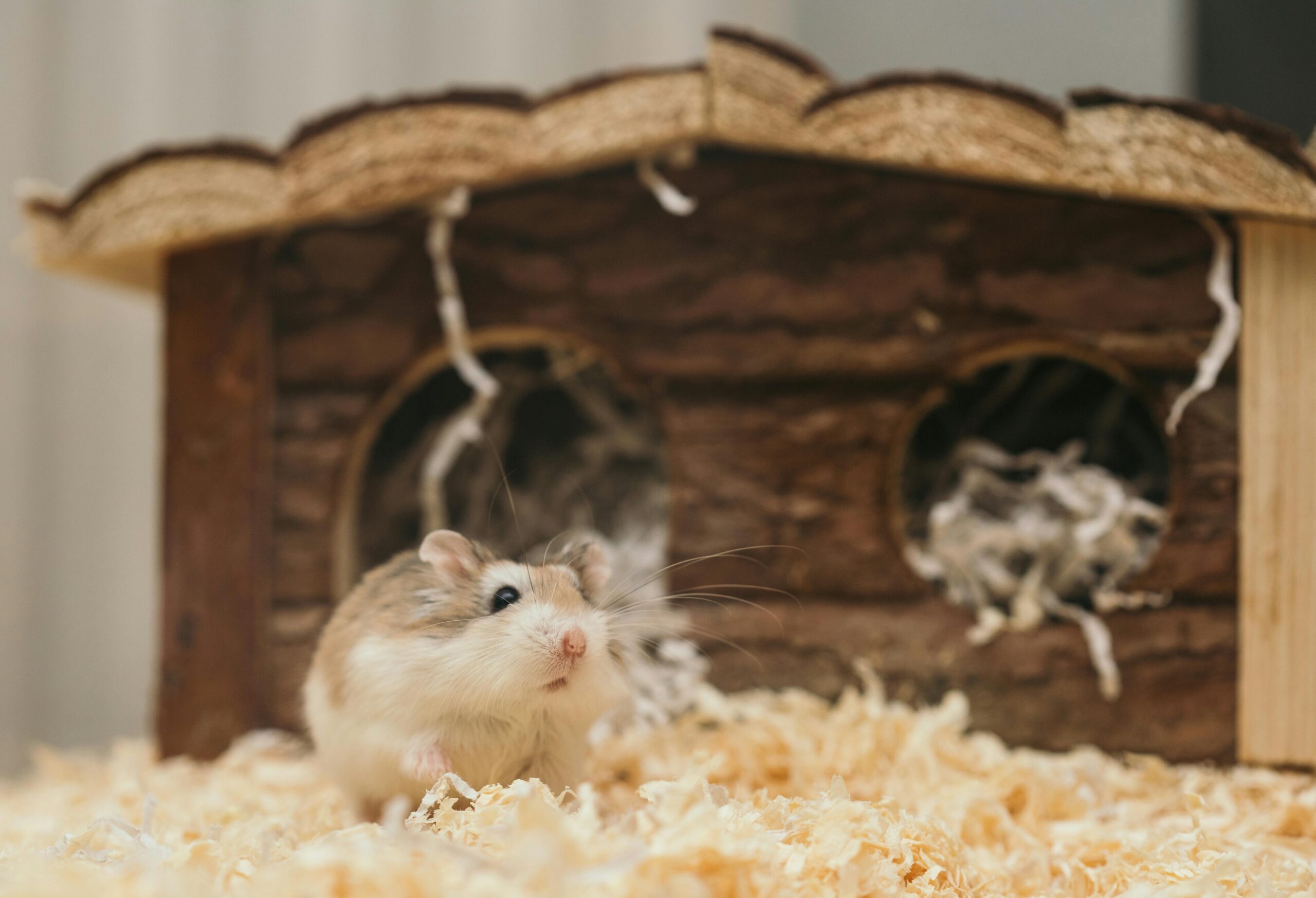Though they bring love, happiness, and company into our life, pets also depend on a clean and healthy surroundings. Whether your pet is a dog, cat, bird, reptile, or another, their well-being and yours depend on their space being neat. A clean surroundings not only keeps everyone’s home nice but also helps the animal to avoid infections and lowers stress. Best practices, equipment, and advice for maintaining several kinds of pet habitats will all be covered in this book.

Overall Guidelines for Maintaining the Living Environment of a Pet
Let’s cover some broad ideas that apply to all pet environments before delving into specifics:
First Concern: Safety
Safety of your pet always comes first while cleaning. If you use any chemicals, guarantee the area is adequately ventilated and use pet-safe cleaning products. Look for non-toxic or environmentally friendly items permitted for use near animals on labelling.
Uniformity
Create a consistent cleaning calendar depending on the demands of your pet. Daily, weekly, and monthly chores will help to maintain their place under control.
Observation
Look for wear, damage, or any other concerns including mold, vermin, or unusual waste that would point to health risks while you clean.
Divide
Move your pet briefly when cleaning their area whenever at all possible to prevent stress or inadvertent cleaning product exposure.
Personal Safety
To guard against zoonotic infections, wear gloves when handling trash or cleaning maybe infected surfaces. Daily tasks include cleaning dog spaces indoors (beds, crates, or play zones). Using a lint roller or vacuum, clear hair and grime.
Dust surfaces with a moist cloth.
Weekly cleanup:
Under hot water with a light detergent, wash bedding.
Using a pet safe disinfectant, wipe crate surfaces.
Look for loose pieces or chewing damage that can endanger safety.
Deep Cleaning Every Month:
In play areas, steam-clean rugs or carpets
If walls or baseboards show evidence of dirt or drool accumulation, scrub them down.
Outdoor Areas: Kennels, Runs, or Yards; Daily Work
Get trash right away to stop smells and bugs.
Examine water bowls for cleanliness.
Weekly Cleansing:
Hose the run area or kennel.
On any hard surfaces, scrub with a pet-safe cleanser.
Seasonal maintenance:
Look at fencing for holes or damage. To keep a nice yard, reseed worn areas of grass.
Daily chores:
cleaning cat spaces, litter boxes. sort the litter and solid garbage.
To stop accumulation in one area, stir remaining garbage.
Weekly Hygiene:
Empty the litter box completely and give it a warm water and gentle soap wash.
Dry completely before adding fresh litter back in.
Deep cleansing once a month:
Should the litter box exhibit wear or odor retention, replace it.
Scratching beds and posts routinely vacuum. From mattresses and other fabric-covered objects to scratching posts, remove hair and dander.
Spot cleaning entails:
Eliminate stains or smells with a pet-safe spray.
Changing:
Deodorizing before vacuuming for a fresh scent, sprinkle baking soda on fabric goods.
Sanitizing Small Animal Contacles
Hamsters, Guinea Pigs, and Rabbits: Daily Work
Eliminate leftovers and replace water.
Spot clean dirty bedding or areas.
Weekly House Cleaning:
Empty the cage completely then change all of the bedding.
Give the enclosure warm, soapy water wash-through.
Deep cleaning once a month:
Clean the enclosure and all of the accessories toys, tunnels, food bowls.
Look for risks including sharp edges, rust, or other damage.
Maintaining Bird Cages: Daily Activities
Change the water and toss away uneatable food.
To get droppings off surfaces and perches, wipe them.
Swap the cage liner paper.
Weekly cleaning:
Separate and clean every removable component of the cage.
Scrub toys and perches in warm water with light soap.
Daily Deep Cleaning:
With a bird safe disinfectant, clean the whole cage.
Replace toys and benches exhibiting too much wear.
Other Advice:
Under the cage, set a mat or tray to gather trash and simplify cleaning.
Maintaining Reptile Enclosures: Daily Activities
Clear trash, shed skin, and uneatable food.
Check and fill water dishes.
Weekly cleaning:
Spot clean the substrate as required.
Clear glass walls to preserve hygiene and view.
Deep cleansing once a month:
If so, replace the substrate.
Clean and sterilize every hiding cover, decoration, and feeding utensil.
Particularly important considerations are:
Steer clear of strong chemicals, use diluted vinegar or reptile safe cleansers.
Throughout cleaning, keep the temperature and humidity under control.
Fish Tank Cleaning Aquatic Habitats: Daily Operations
Eliminate uneaten cuisine.
Look into filtration systems and water temperature.
Weekly Maintenance:
Clear trash from the substrate with a gravel vacuum.
Change the water just partially 10 to 25 percent.
Daily Maintenance:
Follow manufacturer’s directions on cleaning filter media.
Scrape off tank walls from algae.
Amphibian or turtle tanks: daily chores
Spot-clean trash.
Verify ideal water levels and conditions.
Weekly Cleansing:
Change twenty-five to fifty percent of the water.
Using a cleaner safe for reptiles, scrub surfaces.
Monthly Deep Cleaning:
Change your filters.
Deep clean the tank decorations rocks and logs.
Essential Instruments for Sanitary Cleaning of Pet Areas
Vacuum cleaners:
Effectively handling fur and dander, a pet specific vacuum. Use them for cages, tanks, and for other enclosures.
bristle brushes and scrubbers
Disposable gloves guard you against direct waste contact. Look for enzymatic cleansers and disinfectants meant for pet areas. Perfect for pulling hair from cloth materials are lint rollers. Good for surface cleansing are buckets and sponges.
Advice for Maintaining Long-Term Hygiene
Train Your Pet:
Promote proper behaviour including using a designated potty or litter box.
Regular declutter helps you to avoid packing too many toys or accessories into their area.
Track Health:
An abrupt change in behaviour or waste could point to health problems needing treatment.
Create cleaning tasks using calendars or applications.
The Effects of a Clean Pet Environment on Your Pet’s Welfare
Maintaining the health of your pet depends much on a clean living surroundings. Ignoring consistent cleaning could cause allergies, infections, and parasites among other health problems. Maintaining a clean environment for your pet helps to provide several important health advantages.
Preventing Respiratory Problems and Allergies
In people as well as animals, pet dander, urine, and feces can set off allergies. Particularly harmful for little pets or animals with pre-existing health issues, dust and mold accumulation can aggravate respiratory ailments. Frequent surface cleaning, bedding washing, and appropriate ventilation assurance assist to avoid these problems.
Lowing the Parasite and Infection Risk
Animals housed in dirty surroundings run more danger of developing diseases brought on by fungus or bacteria. Pets can also draw ticks, mites, and fleas which flourish in dirty environments. Maintaining clean living quarters will help to lower the risk of these pests and aid to prevent illness spread. For instance, if their litter boxes or bedding are neglected routinely, dogs and cats are likely to have urinary tract infections.
Maintaining correct hygiene for aquatic animals and reptiles
Particularly vulnerable to water quality are aquatic life including reptiles. Apart from problems with digestion, dirty water in tanks can cause skin and respiratory illnesses. Regular maintenance of the water conditions and guarantees of waste free habitats help to create a better environment for their survival. For instance, fish are quite sensitive to changes in water conditions, hence maintaining their good health depends on regular cleaning of their tanks.
Pet Mental Health Benefits
Your pet’s mental health can benefit from a neat, orderly surroundings. For animals like dogs and cats, a clean space helps them feel safe and comfortable since it removes any possible stressors resulting from dirt, smells, or packed surroundings. Living in clean surroundings usually helps pets to be more calm, less stressed, and maybe to show less behavioral issues.
How to Handle Pet Smells
The smell connected with pets may not be totally eliminated even with the most careful cleaning. Still, there are various techniques to either lessen or eradicate these smells:
Use deodorizing products.
Many items are on the market especially meant to neutralize pet smells. One basic, natural fix is baking soda. After sprinkling it on carpets, pet beds, and other surfaces, vacuum it. Many pet retailers carry sprays and powders designed to eradicate smells without endangering your pet.
Keep Excellent Air Flow
Reducing residual scents depends on appropriate airflow. To aid to keep the air fresh, open windows, run fans, or make an air purifier purchase. In smaller areas, think about including pet safe air fresheners. Steer clear of strong artificial smells since they can aggravate delicate noses of animals.
Deep Clean Upholstered furniture
Couches and chairs among other furniture sometimes gather pet hair and smells. Regular vacuuming, steam cleaning or expert upholstery cleaning can help to eliminate strongly ingrained pet smells from furniture.
Clean Pet Bedding Frequently
One great technique to reduce smells is to routinely wash the blankets, bedding, and any cloth your pet comes into touch with. To make sure the bedding stays pleasant for your pet and lasts, always follow manufacturer recommendations on cleaning.
How might one simplify cleaning pet areas?
Particularly if you have several animals or a high-maintenance pet, cleaning after pets can occasionally feel daunting. These ideas will help to simplify and expedite the cleaning process:
Purchase the Correct Instruments
Having the correct cleaning products at hand will help you take care of your pet far more easily. For instance:
Pet-specific vacuums are made to more successfully handle fur and dander than standard vacuums.
To catch litter from your cat’s paws, surround the litter box with a mat.
Perfect for rapid furniture and small space clean ups are handheld vacuums.
Perfect for wiping surfaces, gathering pet hair, and moisture absorption are microfiber towels.
Build a cleaning station.
Set aside somewhere in your house for pet cleaning products. This station should contain all of your waste bags, wipes, pet safe cleaning supplies, and cleaning tools arranged and readily available. Organizing everything into one location will save you work and time.
Execute Preventive Actions
One approach to reduce the mess your pets produce initially is to choose different pets. Train your dog to clean their paws before you enter the house, for example, or create a pet only feeding space that is easily cleaned off. Puppy and kitten training pads or diapers can assist control waste until they are completely house trained.
Examine Pet-Specific Cleaning Services
Think about consulting a professional pet cleaning company if cleaning gets too much for you. Some businesses focus in deep cleaning chores for you, such grooming salons or dog daycare centers, where they handle pet areas. If you find it tough to handle things on your own or are pressed with time, this can be a handy choice.
Conclusion
Apart from their physical condition, spending time to make your pet’s surroundings clean and healthy improves their emotional state. Following these rules and being constant with your cleaning practices guarantees that your pet lives in an environment fit for a happy life and is safe, comfortable. Thus, welcome the process since, in fact, a clean pet area is a joyful pet space!
